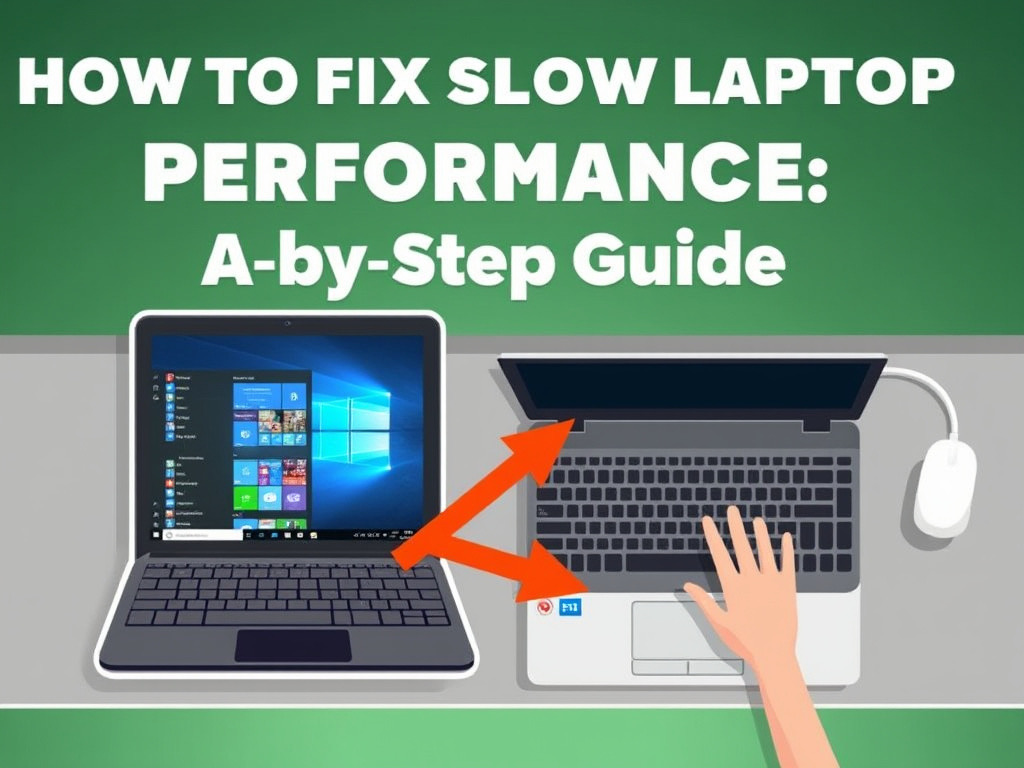
Is your laptop running slower than usual? Over time, even the best laptops can experience a dip in performance due to various factors like background programs, outdated software, or hardware limitations. Fortunately, you don’t have to be a tech expert to fix a slow laptop. Follow these simple steps to boost your laptop’s speed and get it back to optimal performance.
1. Close Unnecessary Programs and Background Processes
- Why it helps: When too many programs are running simultaneously, your laptop’s CPU and RAM are overloaded, leading to slow performance.
- How to close background programs on a laptop:
- On Windows: Press
Ctrl + Shift + Escto open the Task Manager. Go to the “Processes” tab and identify programs that are consuming high amounts of resources. Select them and click “End Task.” - On macOS: Open “Activity Monitor” via Spotlight Search. Select unwanted applications from the CPU or Memory tab and click “Quit Process.”
- On Windows: Press
2. Uninstall Unnecessary Software
- Why it helps: Over time, unused programs take up space and may run in the background without your knowledge, slowing down performance.
- How to uninstall unused programs on Windows:
- On Windows: Go to “Control Panel” > “Programs” > “Uninstall a program” and remove software you no longer use.
- On macOS: Open the “Applications” folder, drag unwanted apps to the Trash, and empty the Trash.
3. Disable Startup Programs
- Why it helps: Some programs automatically start when you turn on your laptop, slowing down boot time and overall performance.
- How to disable startup programs on a laptop:
- On Windows: Press
Ctrl + Shift + Escto open Task Manager. Navigate to the “Startup” tab, right-click on programs you don’t need at startup, and select “Disable.” - On macOS: Go to “System Preferences” > “Users & Groups” > “Login Items” and remove unwanted apps.
- On Windows: Press
4. Update Your Operating System and Drivers
- Why it helps: Outdated operating systems and drivers can cause compatibility issues, bugs, and sluggish performance.
- How to update laptop drivers and OS:
- On Windows: Go to “Settings” > “Update & Security” > “Windows Update” and check for updates. Also, update drivers via Device Manager.
- On macOS: Go to “System Preferences” > “Software Update” to check for OS updates.
5. Run a Malware Scan
- Why it helps: Malware can severely affect your laptop’s speed and functionality by using up resources and creating vulnerabilities.
- How to remove malware from a slow laptop:
- Use a reputable antivirus program to scan your system for malware, spyware, and viruses. Options like Malwarebytes or Windows Defender (built into Windows) are effective.
6. Clean Up Disk Space
- Why it helps: A nearly full hard drive can slow down your laptop’s performance. Deleting unnecessary files can free up valuable space.
- How to free up disk space on laptop:
- On Windows: Use the built-in Disk Cleanup tool (search for it in the Start menu). This helps remove temporary files, system cache, and more.
- On macOS: Use “Finder” > “Go” > “Go to Folder” and type
/Library/Cachesto clean out cache files.
7. Upgrade Your RAM or Storage
- Why it helps: If your laptop is still slow after the previous steps, it may not have enough RAM or may benefit from switching to an SSD.
- How to upgrade RAM on laptop for better performance:
- Consult your laptop’s manual or a professional for upgrading RAM or switching from a hard drive to a solid-state drive (SSD). SSDs are much faster and can significantly improve performance.
8. Defragment Your Hard Drive (HDD Only)
- Why it helps: Defragmentation reorganizes scattered data on your hard drive, allowing it to work more efficiently. This is essential if you’re using a traditional HDD (not an SSD).
- How to defrag hard drive on laptop:
- On Windows: Type “Defragment and Optimize Drives” into the Start menu and select your hard drive to analyze and optimize.
- On macOS: Macs with SSDs do not require defragmentation.
Conclusion: Boosting Laptop Speed Made Easy
By following these steps, you can easily diagnose and fix a slow laptop. Regular maintenance, such as closing unnecessary programs, updating software, and freeing up disk space, will keep your laptop running smoothly. For more advanced users, upgrading hardware components like RAM or switching to an SSD can provide a significant speed boost.
- how to close background programs on a laptop
- uninstall unused programs on Windows
- disable startup programs on a laptop
- update laptop drivers and OS
- remove malware from a slow laptop
- free up disk space on laptop
- upgrade RAM on laptop for better performance
Leave a Reply